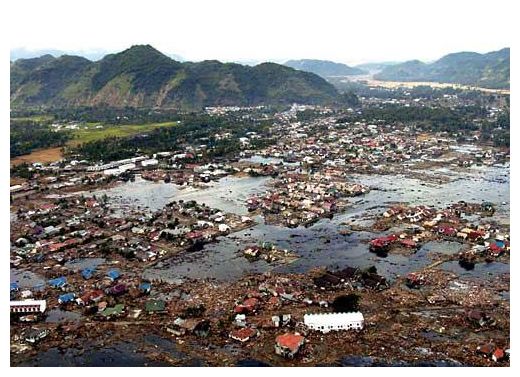
© U.S. Navy photo by Petty Officer 2nd Class Philip A. McDanielA village near the coast of Sumatra lays in ruin, Jan. 2, 2005, as a result of the tsunami that struck South East Asia Dec. 26, 2004.
The earthquakes that rocked Tohoku, Japan in 2011, Sumatra in 2004 and Chile in 1960 - all of magnitude 9.0 or greater - should not have happened, according to seismologist's theories of earthquake cycles. And that might mean earthquake prediction needs an overhaul, some researchers say.
All three earthquakes struck along
subduction zones, where two of Earth's tectonic plates collide and one dives beneath the other. Earlier earthquakes had released the pent-up strain along Chile's master fault, meaning no big quakes were coming, scientists had thought. Japan and Sumatra both sat above on old oceanic crust, thought to be too stiff for superquakes.
And records of past quakes, combined with measurements of the speed of Earth's tectonic plates, suggested the Tohoku and Sumatra-Andaman regions
couldn't make quakes larger than 8.4, almost nine times smaller than a magnitude 9.0 temblor.
"These areas had been written off as places incapable of producing a great earthquake," said Chris Goldfinger, a marine geologist at Oregon State University in Corvallis.
But the events of 1960, 2004 and 2011 showed that these faults were capable of producing some of the
most destructive earthquakes in recorded history, suggesting earthquake researchers need to re-think aspects of how they evaluate a fault's earthquake potential.
"It's time to come up with something new," Goldfinger told OurAmazingPlanet.

Comment: Supermarket looting spreads in Argentina